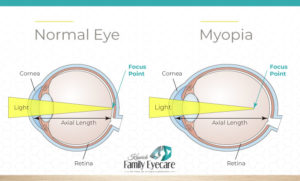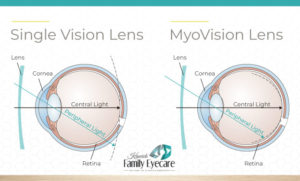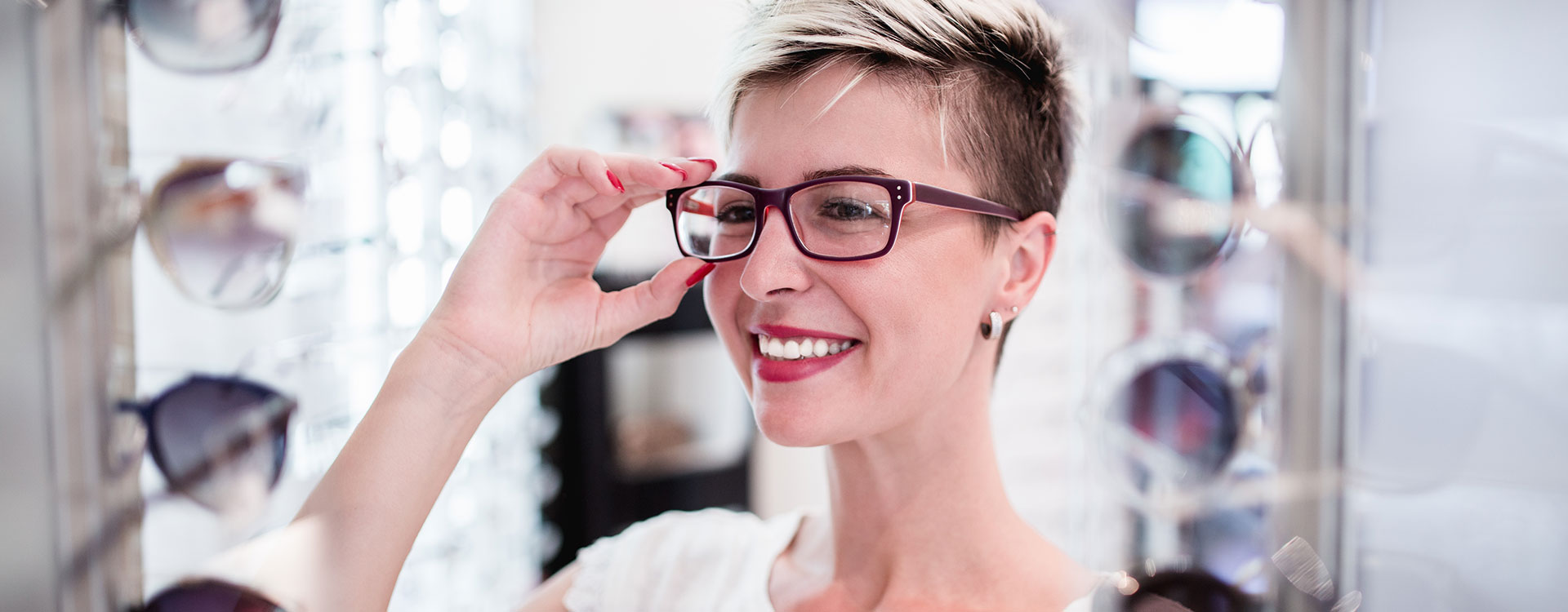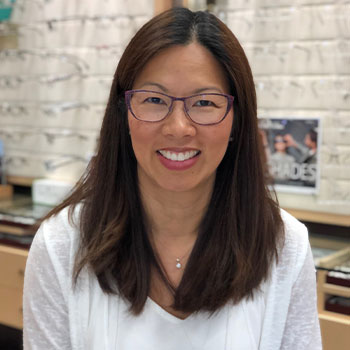Over the last few decades, myopia has become increasingly common, especially among kids. The World Health Organization predicts that by the year 2020, roughly ⅓ of people worldwide will suffer from myopia, which is also known as nearsightedness.
While this massive increase rise prevalence is definitely unsettling, it has resulted in some amazing technological advancements for treating myopia. One of the most exciting innovations to treat myopia in the last few years is Zeiss’ MyoVision eyeglass lenses.
If we want to understand why and how MyoVision lenses are such a breakthrough, we first need to understand what myopia is, how it works, and how it’s typically treated
A Quick Intro to Myopia & Myopia Control
Myopia (or nearsightedness) is one of the most common eye issues in kids and adults alike. In a non-myopic eye, the cornea refracts light to focus directly on the retina, which is at the back of the eye. With non-myopic eyes, the distance between the front of the eye and the back of the eye (the axial length) is too long. As a result, the light focuses in front of the retina, causing distant objects to appear blurry.

For most adults, their level of refractive error stays the same, meaning they can rely on the same prescription for years or even decades. On the other hand, myopia in kids tends to get worse as they get older.
As a child grows, their eyes grow with them. That means their axial length gets longer, causing their distance vision to get worse and worse until it finally stabilizes near the end of puberty.
Myopia Control
Myopia control is a type of treatment that slows down the rate of myopia progression. While it can’t undo the level of refractive error a child already has, and it’s unlikely to stop progression completely, it can prevent the refractive error from getting significantly worse before they reach adulthood.
Historically, the aim of myopia control has been to correct the child’s distance vision while alleviating eye strain, although the Optometric Community is split on whether eye strain contributes to myopia or not.
Some examples of traditional myopia control methods include atropine drops, which freezes the eyes focusing mechanism, ortho-k lenses, which change the shape of the child’s cornea overnight, and multifocal lenses which correct a child’s distance vision without impairing their near vision.
How Do Zeiss MyoVision Lenses Work?
Before MyoVision lenses, the only way glasses could help with myopia control is if they were multifocal lenses, meaning they offer multiple prescriptions in different areas of the lens. MyoVision lenses are the first-ever single vision lenses to be used for myopia control.
Previously, we thought myopia came from central vision. But recent studies indicate a link between peripheral vision and the growth of the eyeball.
Data suggests that if children have peripheral hyperopic defocus (peripheral light focuses behind the retina), their eyeball will continue to grow longer in an attempt to accommodate that peripheral light. The problem is that by growing longer, the eye limits its ability to see distant objects clearly.
Zeiss MyoVision lenses are different from other methods of myopia control because they are the first single vision lens to apply peripheral defocus management.
What Is Peripheral Defocus Management?
MyoVision lenses manipulate peripheral light to focus on the retina rather than behind the retina. As a result, the eye stops growing quite as fast, as it’s no longer trying to accommodate the peripheral light’s focus point. It’s almost like pressing the “pause” button on your child’s eye growth.

What Are the Long-Term Effects of MyoVision?
Like any effective method of myopia control, the long-term effects of MyoVision are manageable distance vision into adulthood. It’s important to note that children will still live with myopia as they become adults. There is currently no cure for myopia, and progression cannot be reversed; only prevented.
MyoVision Slows down myopia progression so your child only has to contend with mild-to-moderate myopia in adulthood, rather than severe myopia, or “high myopia.”
Are MyoVision Lenses the Best Option for my Child?
As I’ve already said, there are a range of myopia control options available today, and as science continues to move forward, it’s likely that more advanced and innovative solutions are still to come.
I would encourage you, the parent, to do some research. Find out what methods are out there and where eye doctors are seeing the best results. Just remember; only your optometrist has all the necessary information to help you decide which method of myopia control is right for your child’s unique visual needs and lifestyle.


